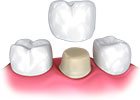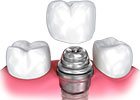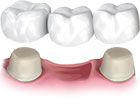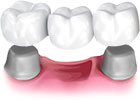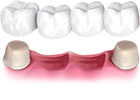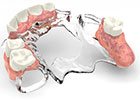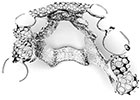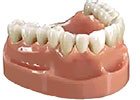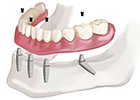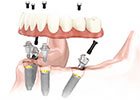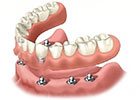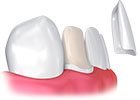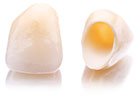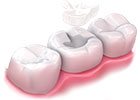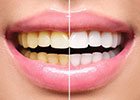DENTVITALIS d.o.o., Krešimirova 60, Rijeka, Croatia.
Temporomandibular joint dysfunction: Bruxism - grinding of teeth
Parafunctional jaw muscle activity means excessive contraction of the muscles and it is most often caused by stress and manifested by excessive grinding of the lower teeth against the upper ones. Sleep bruxism is much more intense and dangerous because there is no way to control it. It usually lasts from 15 to 40 minutes, and the intensity of muscle contraction can be as much as 6 times greater than the daily, semi-conscious jaw clenching.
This causes a change of teeth position, their abrasion and, finally, the so-called lowered occlusion. The muscles are painful, it is more difficult to open the mouth, changes occur to the joint of the jaw as well as a number of other symptoms.
In these cases, a doctor of dental medicine makes the so-called working diagnosis which need not be the final diagnosis. The relation between the jaws is determined by virtue of a manual and instrumentation analysis method and, after that, treatment may start.
The bruxism treatment is carried out in several stages. An adequate occlusion splint, a plate which prevents contact between the upper and lower teeth and maintains the right distance between the jaws, is made. Thus the joint and the muscles relax and prepare for a changed height of occlusion for the future prosthetics. Apart from that, specific physical therapy of the chewing muscles is performed, and, in some cases, muscle relaxing medications are prescribed.
It is paramount that the patient is introduced to and trained about certain isotonic and isometric exercises which make it possible for him/her to carry out part of the therapy without going to the therapist.
Did you know that headache, tinnitus and neck pain are often caused by the problem of excessive or irregular occlusion (temporomandibular joint dysfunction)?
Free examination
-
Organized accommodation Comfortable and beautiful
Depending on the requirements and wishes of each patient, we can organize or arrange the organization of your overnight stay.
-
Manner of payment
Pay with all major credit and debit cards(VISA, Mastercard, Maestro)
-
We guarantee for our services
DentVitalis offers a guarantee for all prosthetic and implant procedures!


